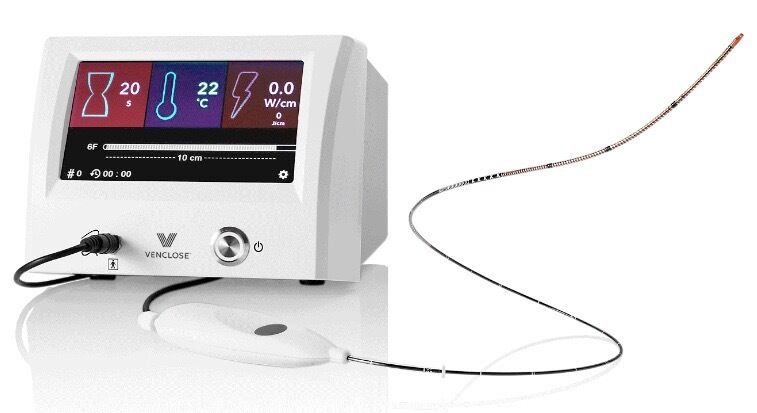
What is Radiofrequency Ablation?
Dr. Bulger explains that radiofrequency Ablation (RFA) is a minimally invasive method of using heat to treat various parts of the body.

Varicose veins can lead to serious health complications. Here’s how to tell when it’s time to take action and treat your varicose veins.
Some people think varicose veins are simply an uncomfortable cosmetic issue, but there are many underlying causes of varicose veins that could, if left untreated, could jeopardize one's health and well-being. Treating your varicose veins and any early symptoms is critical to preventing health problems down the line, such as skin discoloration, leg ulcers, or even deep vein thrombosis (DVT).
It's important to take proper care of your varicose veins and seek professional help when necessary. But when exactly is that stage? Here’s how to tell if your varicose veins are becoming problematic, and what you can do about it.
There are many signs and symptoms of varicose veins, some of which could indicate more significant underlying problems:
Hyperpigmentation — Varicose veins can result in darker patches of skin and discoloration of the surrounding skin or the ankles. Stasis dermatitis, an itchy rash that can cause cracked skin, is another condition associated with varicose veins.
Leg ulcers — Venous ulcers are open sores caused by poor circulation due to varicose veins. These sores can cause inflammation, pain, and a sense of limb heaviness. Untreated ulcers could even omit pus and an unpleasant odor.
Bleeding — Inflamed varicose veins press against the skin, causing them to be more vulnerable to cuts and closer to the surface. Even minor cuts and injuries to a varicose vein could result in extensive bleeding.
Pain — Throbbing, muscle cramping, dull aches, or restless leg syndrome can all stem from the presence of varicose veins.
Keeping watch for these conditions and pointing them out to a specialist can help prevent your varicose veins from potentially becoming dangerous.
There are some very serious health consequences associated with varicose veins. For this reason, it’s important to watch out for any indications of these medical issues and seek treatment right away if they’re spotted.
Due to vein weakness and decreased blood flow, varicose veins can become inflamed just below the skin in your smaller leg veins. This condition is called superficial thrombophlebitis. Symptoms of superficial thrombophlebitis include skin redness, tenderness of the vein, and ongoing pain and swelling in your affected leg.
Significant swelling of untreated varicose veins can also lead to infections such as cellulitis, since stretched-thin skin can't properly defend against infection.
The most serious medical condition associated with untreated varicose veins is blood clots. Chronic inflammation from varicose veins can damage the valves that control blood flow and prevent them from adequately pumping blood, which forms clots. Warm, swollen, or red veins could all indicate a blood clot. Deep vein thrombosis (DVT) is a serious, potentially life-threatening condition associated with deeper varicose vein blood clots.
Symptoms of DVT include red and swollen legs, and some people feel like their legs are being pinched or pulled. In very critical DVT cases, blood clots detach and enter the bloodstream. When a blood clot travels to the lungs, a pulmonary embolism can occur. A DVT is a very serious and often deadly emergency.
Symptoms include chest pain, dizziness or lightheadedness, rapid pulse, sweating, irregular heartbeat, and coughing up blood. If you should experience these symptoms, seek medical intervention immediately.
This can all seem a little scary, but there are many ways to prevent varicose veins from becoming dangerous. Here are four easy at-home solutions for regulating your varicose veins:
Exercise every day. Focus on moving your legs to stimulate circulation.
Manage your weight and salt intake. Extra weight puts extra pressure on your veins, and too much salt can raise blood pressure and cause fluid retention.
Elevate your legs above heart level. Doing this several times a day can reduce fluid retention and pooling in your legs.
Avoid standing or sitting for long periods. Set a reminder or alarm to move around for a few minutes every hour.
At Center for Vein Restoration, we offer a variety of medical treatments for your varicose veins. Heat-based treatments, like Radiofrequency Ablation (RFA), present an alternative option to traditional vein stripping surgery. We also offer minimally invasive procedures, such as VenaSeal and ClariVein, which help close up problematic varicose veins without the use of anesthesia. Call us at 240-965-3915 to schedule a consultation with our team today.